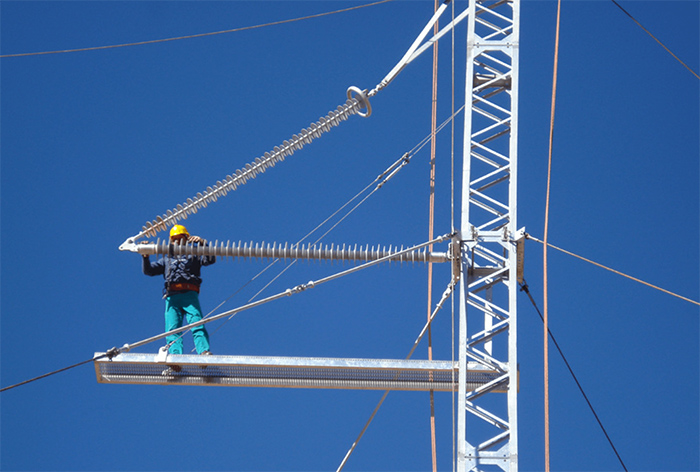
OVERVIEW OF POWER ARC TEST
2023-03-17 18:30Statistical Overview of Tests
Analysis of results of tests carried out on 162 insulator sets over a five-year period is shown below:
Types of Insulator Sets & Components
Insulator sets come in a number of different design types and insulating materials, depending on the intended application. The insulator sets tested during the five-year period comprised:
• 92 suspension sets
• 49 tension sets
• 17 'V' strings
• 4 cross-arm insulators

In terms of the insulating material used and insulator design, insulator sets tested included:
• 81 composite
• 34 glass, cap & pin
• 12 glass, cap & pin (short string)
• 27 porcelain, long rod
• 8 porcelain, cap & pin
Critical Components
The figures above give an indication of the quality of insulator sets available today and the sustained need for testing before installation. However, perhaps more illuminating is the insight into the principal failure modes for insulator sets. This insight highlights areas that manufacturers should pay particular attention to when designing new insulator sets.
Long-rod Insulator Sets
For long-rod sets, three particular potential issues were identified. The metallic parts of the insulator unit can be prone to melt if not well designed. Furthermore, poor design can lead to the sheds near these metallic parts breaking. Finally, the arc can cause metal to evaporate from the set's protective fitting, causing 'puddling'.
Composite Insulator Sets
The silicone rubber used in composite insulators exhibits high resistance to power arc testing. However, the critical point for these sets is the where the fiberglass core connects with the metal end fittings.
Cap & Pin Insulator Sets (Glass or Porcelain)
Cap & pin insulators exhibit high mechanical resistance after power arc tests. The main areas of concern for these sets are the possibility of sheds breaking and, in the case of glass sets, cooling of the cap & pin units.
Protective Fittings: Load-Bearing Fitting Protection & Arc Direction Fittings
Power arc tests put much greater mechanical and thermal strain on these fittings than short-circuit tests. This must be taken into account when designing the protective fittings of insulator sets of all kinds.
There is also risk of material from these fittings melting onto the insulator units. Care should also be taken to ensure that protective fittings do not move during arcing, which can lead to the arc root sitting on the load-bearing fittings.
Protective Fittings: Corona Rings, Grading Rings
These fittings are not primarily designated for arc currents but influence the position of the arc root and how it moves. As with other protective fittings, risk factors here include material melting onto the insulator units and movement of the fittings causing the arc root to move away from its intended position. In addition, changes to the contours of these fittings can lead to excessive corona discharge and radio noise.
www.inmr.com/power-arc-testing-insulator-sets
